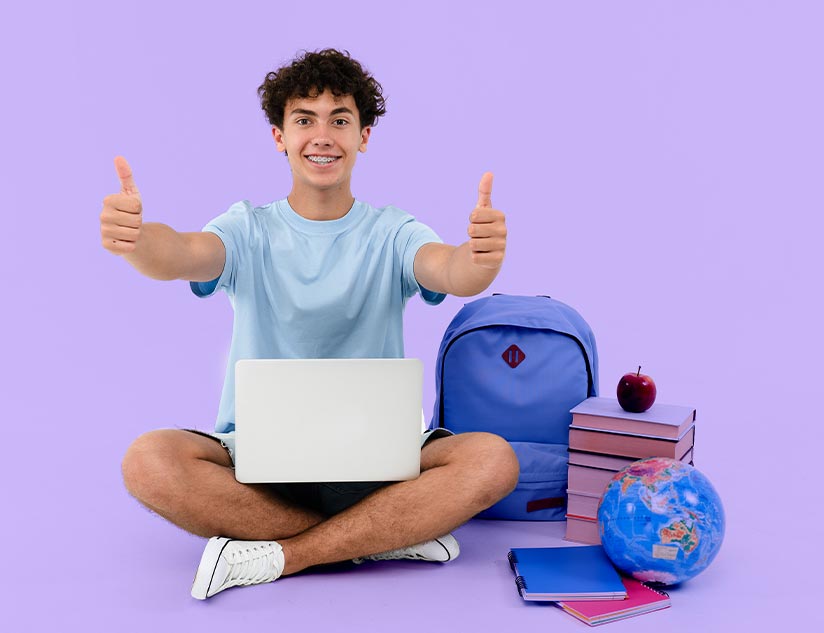The Benefits of Visual Content in Higher Education
August 17th, 2020
In 2007, a study that focused on the effect of computer software on the academic performance of children was reported by the US Department of Education to Congress. The findings featured in many newspapers and magazines, and the report said that there was no significant impact on student performance. But there was a problem with this report. It did not include the use of some critical components of digital learning, such as visual content! Visual content, including videos, images, and infographics, play a vital role in aiding learning.
Even before we learn to read, we take in a massive amount of information through images that continue through our early childhood, when we have picture books or graphic novels to teach us about the world. However, as we grow, we learn less through visuals and more using text and audio lessons.
The Power of Visual Content in the Classroom
The human brain functions in a unique way, more suited to visual learning. There are two types of learners – auditory sequential learners and visual-spatial learners. For auditory sequential learners, linear organization, words, and order work perfectly. However, visual-spatial learners perform better with big-picture thinking, images, and possibilities.
In fact, in a study conducted in 2 schools, on 750 students, it was found that 33% of the students were strongly visual-spatial mode learners, and 30% moderately inclined towards visual learning. Therefore, when learning only takes place through text, there is a whole set of students who cannot benefit as much. Plus, the brain processes visuals quickly. The brain takes around 0.5 seconds to process visuals, whereas it requires about 6 seconds for preparing 20 to 25 words.
Why Visual Content is Necessary for Higher Education
Some of the reasons why visual content is necessary for higher education are:
Development of Analytical Skills
Visual content can be extremely beneficial in developing the analytical skills of students. In 2017, a study involved 64 students, where images were used to develop analytical skills and an analytics test was given afterward. The students in the experimental group performed significantly better than the students in the control group, who did not use images in skill development.
Attention and Capacity
It’s no secret that students today have short attention spans. But this can be tackled by including images and videos in learning. Eye-tracking studies have revealed that most readers pay attention to the image-rich section of a website, while text gets only 20% of the attention.
Appeal and Engagement
Engaging with content helps students to learn faster, and this is where visual content excels. Visuals draw the attention of the learner and enhance engagement. To understand the impact of images on engagement, consider this. Facebook posts with images have a 230% higher engagement than those without a picture.
Retention
Visuals stick in our brain for longer. A study published by Changing Minds revealed that a student recalled only 25% of the information after 3 hours of a spoken lecture. But with the use of illustrated images, the recall rate sky-rocketed to 80%.
Makes Learning Accessible
Videos and images can make learning accessible for those with disabilities and learning impairments. Videos, in particular, have been found useful in teaching children with ADHD.
Benefits of Visual Content in Learning for Teachers
Not just students, teachers love visual content as well. Teachers can convey their thoughts a lot more efficiently using visual mediums, leading to more effective lessons. The students also felt that images provided a better representation of quantitative, historical, and scientific data.
Teachers need to work less to teach the same concepts with images than they would with text alone. But there is one issue. For efficient visual teaching, teachers need to have the right tools.
How to Implement Visual Content in Learning
To integrate visual content effectively in learning, you need an advanced learning management system, such as MagicBox™. This award-winning platform integrates SmartPage, a tool that enables educational institutions and educational publishers to convert legacy content into IDPF-compliant, fixed-layout, ePub3 content, with just a single click. Upon the creation of content, you can enrich it with interactive, multimedia elements, such as images, videos, audio, and much more. There are even in-built themes, interactions, and templates that make creating media-rich content quick and easy.
With its partnership with Bongo, MagicBox™ also allows video assessments and assignments. It will enable teachers to give time-stamped video feedback to individual students and groups, improving the effectiveness of the assignments and assessments.
Furthermore, the robust online/offline eReader on this platform allows students to add highlights, annotations, and bookmarks, to make specific important parts of the text stand out visually from the rest for easier learning and revision of concepts.
Would you like to enhance the learning experience and outcomes at your institution? Contact us to know how MagicBox™ can be an advantage to achieve your goals.










